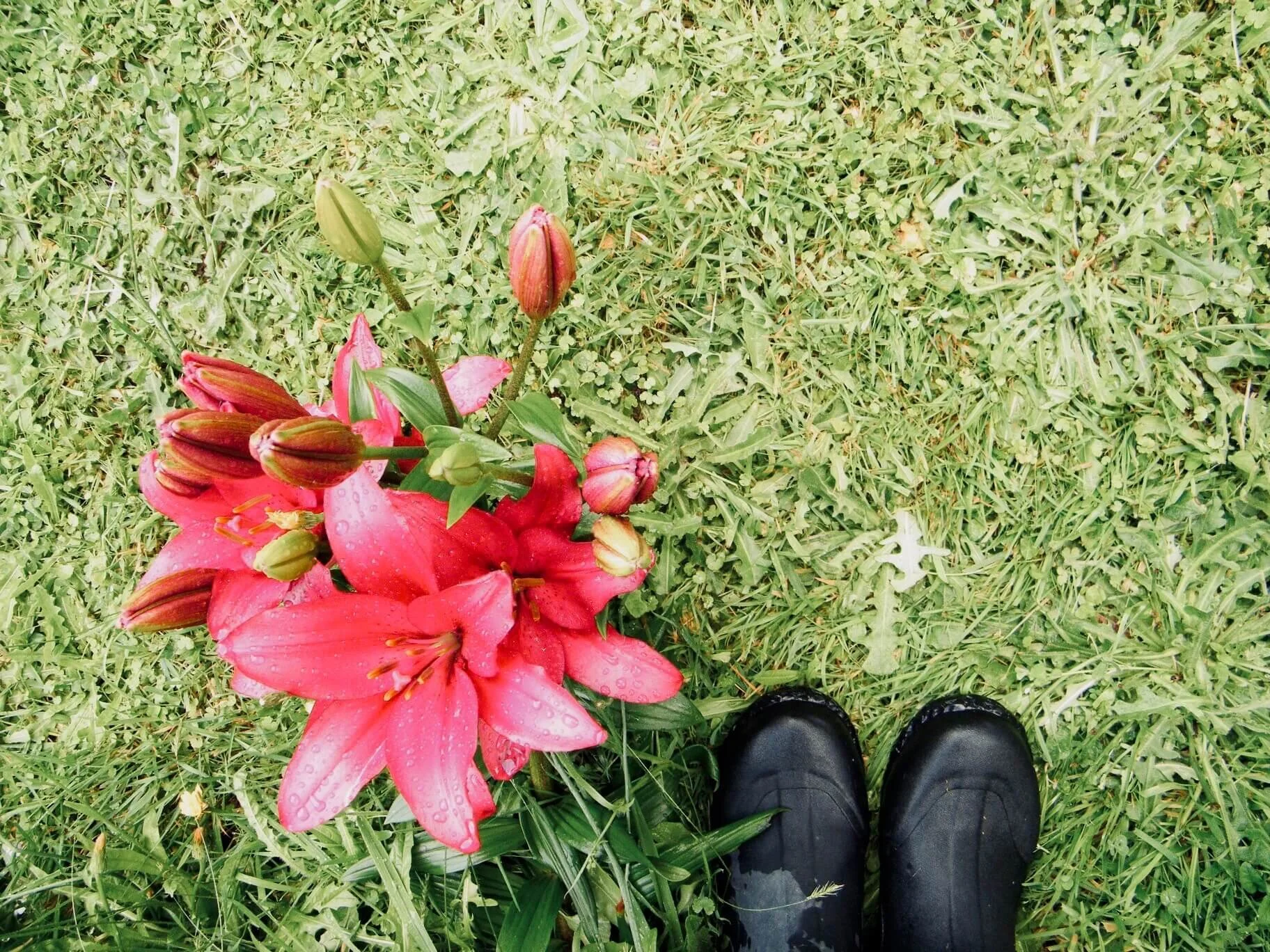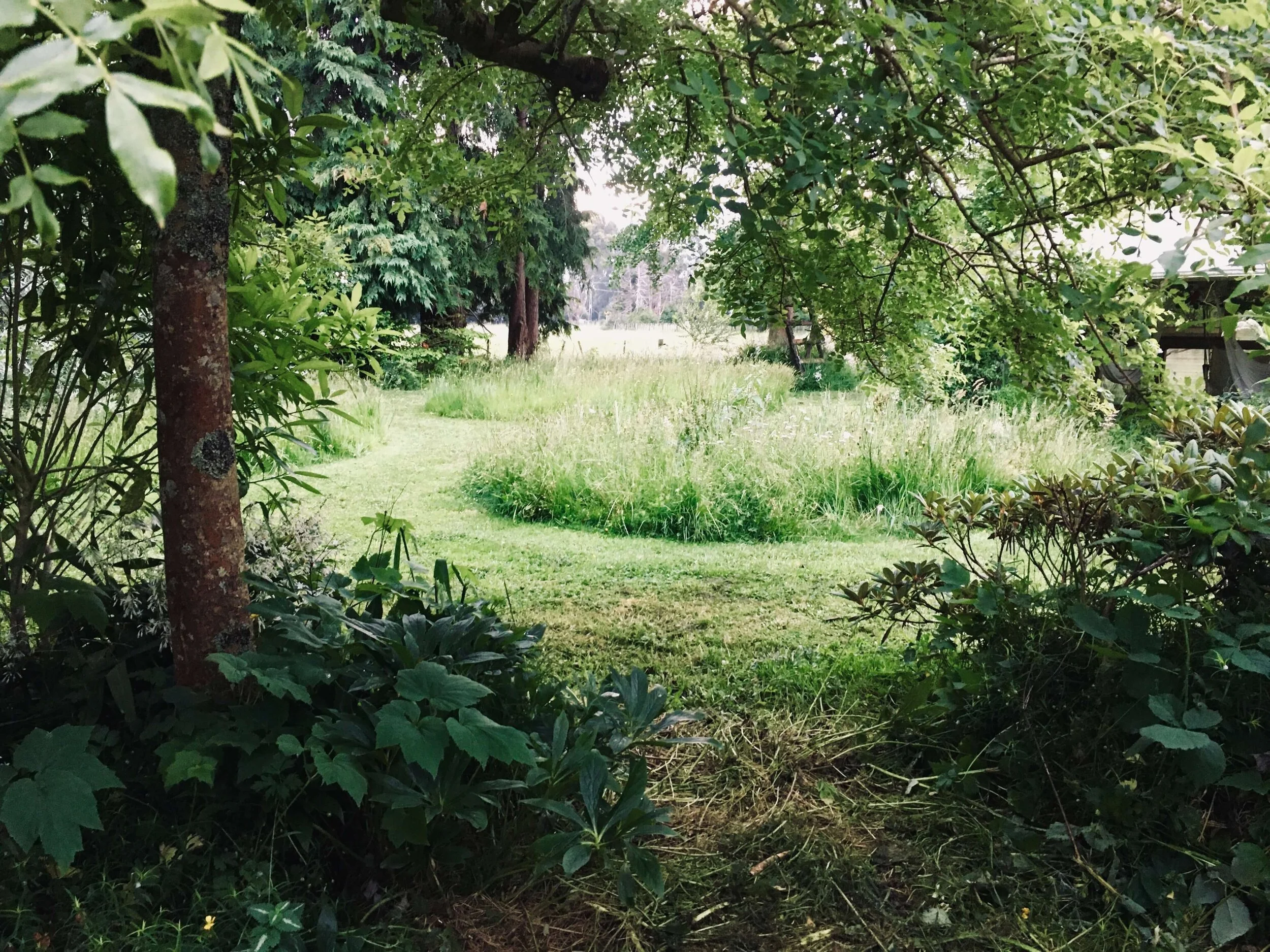For the birds, and for me
Baby trees, ready to go—toe toe, manuka, makomako (wineberry) and manatu (ribbonwood)
When it comes to gardens, I long to be in them. Not walking alongside them, looking at them, but right inside them. I love paths that take me in under trees, that weave me around shrubs. I want to be dwarfed by it, swallowed up inside it. I want to be folded in, to fade in, to become part of it. I long for that blissful oblivion, the shedding of skin; to be, for a moment, place not person.
Walking the labyrinth this year, the grass up to hip height at its tallest, allowed me to become part of the lawn. The scale of the lawn was suddenly all wrong, or all right. It was a giant’s lawn, or I was shrunk, or both. I was a character in a book. I was Arietty, a Little, Lilliputian… I was a little girl again, towered over by fruit trees in my grandparents garden, trailing along behind my sister in the neighbour’s overgrown garden (she was a witch, of course).
This is the scale things should be. There is something right about feeling small in nature.
Leaving the lawn to grow last summer allowed me to reimagine the different spaces. Sometimes you just get used to looking at something and forget that most everything can be imagined differently.
I often think about what this land once was—forest. Valley wide, mountain to hill, thick beech forest. All the time I have to remind myself that I am not abandoning this place by stepping back, but freeing it to become itself. If left alone long enough, it will reforest itself. It is already doing it.
In every untouched place, in the clearings under trees and shrubs, seedlings crop up. Birds sit in the trees and drop seeds of all kinds. There is the less favourable hawthorn and blackthorn, ivy and gorse, but also those pioneer plants that signal a regenerating forest—mahoe, kowhai, lemonwood and pittosporum. Later, up through these, the forest giants will grow. It is a slow, but sure process.
What I am doing—planting native trees in our open areas—is a different kind of process. Tree for tree, nature’s way will win out over my efforts every time. Nature’s forest will grow faster and be stronger and more resilient than anything I can do by hand.
But I am planting for the birds. I am planting because thickets of shrubs make more sense than swathes of lawn. I am planting because I want more spaces to fall into, to feel small in. Mostly though, it’s for the birds. The native plants I’ve chosen provide either nectar or seeds for our beautiful wood pigeon, the kereru, tui and korimako, the bellbird.
After I finished planting yesterday I sat on the grass and rested. A korimako landed in the abutilon tree behind me and fed on its orange lantern flowers. It clung to a branch and sang in the wind. It flew away and came back a few minutes later with a mate. I had just stood up to leave and they flew in front of my face, landing right next to me, unconcerned by my presence. Delight!
Birds, like all animals (including us) must go where the food is. If there is nothing to eat they will not—cannot—stay. I am on a mission to create a place in which our native birds will always find food. In my working bee of one this weekend, I made a start. I planted 25 more trees that will eventually feed the birds. When I work in the garden like this, I am as content as can be. I look forward to the trees growing (these ones will grow 4-5 metres high) and assuming my rightful place underneath, feeling small, and very happy about it.
The native saplings, safely planted, mulched and protected from rabbits and pukeko!








What you experience instead is the fizzing aliveness of plants and animals, curiosity at how things naturally unfold, and magical combinations that we could never imagine nor contrive.